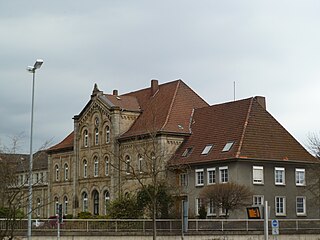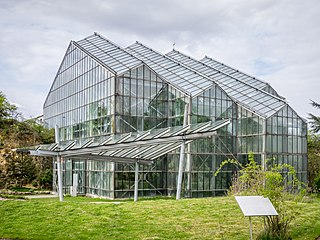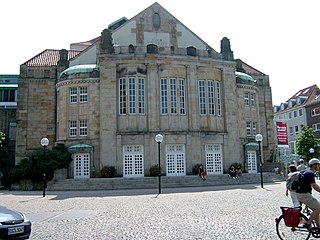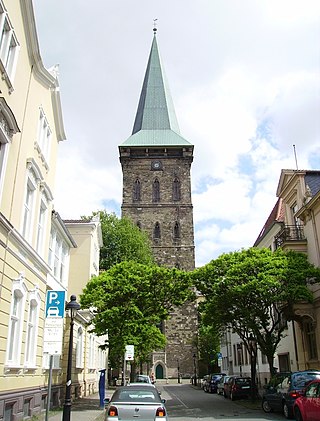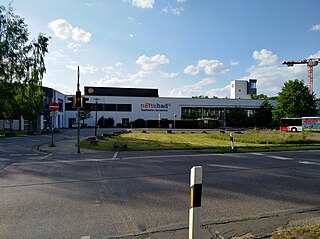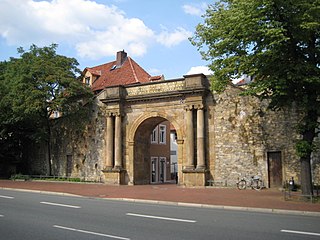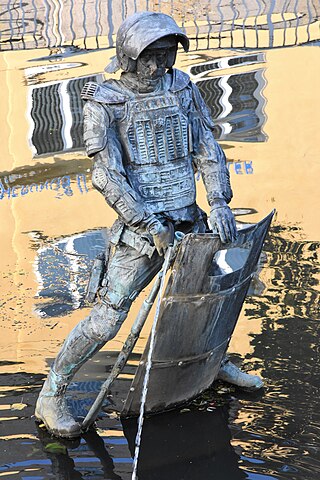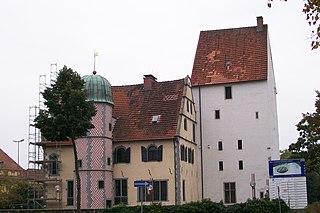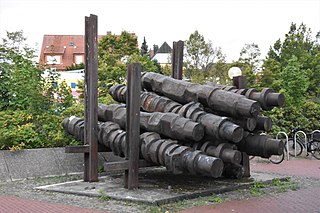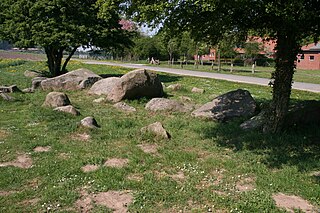25 Sights in Osnabrück, Germany (with Map and Images)
Legend
Welcome to your journey through the most beautiful sights in Osnabrück, Germany! Whether you want to discover the city's historical treasures or experience its modern highlights, you'll find everything your heart desires here. Be inspired by our selection and plan your unforgettable adventure in Osnabrück. Dive into the diversity of this fascinating city and discover everything it has to offer.
Sightseeing Tours in Osnabrück1. Gestapo Keller
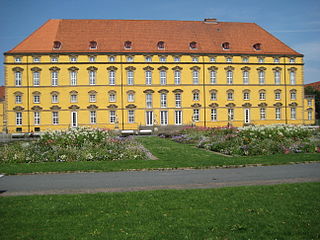
Osnabrück Castle was the bishop's residence of the Protestant Prince-Bishop of Osnabrück, Ernst August I of Brunswick-Lüneburg and his wife Sophie of the Palatinate. It has been the seat of the administration of the University of Osnabrück since 1974. The building including the garden, the sculptures in the castle garden including the Lyra monument are listed as historical monuments.
2. Die Villa_
The Villa Schlikker, officially called the Villa_Forum for Remembrance Culture and Contemporary History since 2024, or Die Villa_ for short, is a former industrialist's villa in Osnabrück, which, as part of the Museum of Cultural History with the Felix Nussbaum House and the Excise House, belongs to the Osnabrück Museum Quarter (MQ4) on Heger-Tor-Wall/Lotter Straße. The building, built in 1900, was the seat of the local NSDAP party headquarters during the National Socialist era and bore the name "Adolf Hitler House", and was called the "Brown House" by the population. After the end of the Second World War, it was used by the British occupying forces until it passed to the city of Osnabrück, which set it up as a natural history and cultural history museum.
3. Haus Tenge
Haus Tenge is a listed classicist residential and commercial building with stonework in Osnabrück (Lower Saxony). Steel entrepreneur Jürgen Großmann ran the gourmet restaurant "la vie" there until 2018, which was most recently awarded three Guide Michelin stars.
4. Museum Industriekultur Osnabrück
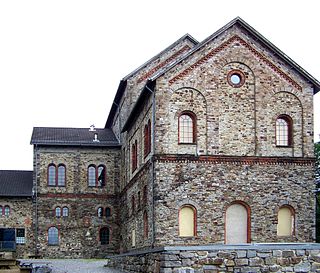
The Museum Industriekultur Osnabrück (MIK) is an industrial museum in Osnabrück with a focus on mining. It is part of the Route of Industrial Heritage in the Northwest and is a non-profit organization.
5. Haarmannsbrunnen
The Haarmannsbrunnen is a monument to miners in Osnabrück (Lower Saxony). The fountain from 1909 is one of the oldest workers' monuments in Germany. It bears the name of its founder, the steelworks director and senator August Haarmann. During the operation of the monument, the water flowing out pours over the bronze figure and flows into the fountain built below in front of it.
6. Löwenpudel (Nachbildung)
The Lion Poodle is a statue in front of St. Peter's Cathedral in the Lower Saxony city of Osnabrück. It shows a lion sitting on a pedestal the size of a man, which looks like a poodle. Severely damaged by the weather, a replica created by the sculptor Lukas Memken (1860–1934) has stood on the pedestal since 1925. The former stone is in the city's cultural history museum, although this was probably not the original either.
7. Großsteingrab Teufelssteine
The megalithic tomb Teufelssteine is a Neolithic passage tomb of the Emsland Chamber type with the Sprockhoff no. 914. It was built between 3500 and 2800 BC as a megalithic site of the Funnel Beaker Culture (TBK). Neolithic monuments are an expression of the culture and ideology of Neolithic societies. Their origin and function are considered to be hallmarks of social development.
8. ehemaliger Hannoverscher Bahnhof
The Hannoversche Bahnhof is the former main station of the city of Osnabrück. The train station on today's Wittekindstraße went into operation with the Hannoversche Westbahn towards Löhne on November 22, 1855. Until the decommissioning of passenger transport in 1895, the Hanoverian train station was the most important train station in the city area of Osnabrück. Due to the crossing situation with the Wanne-Eickel-Hamburg railway line, a few hundred meters east of the Hanover train station was built there. The freight traffic was operated in 1913 until the central goods handling station in the Fledder district was completed. The reception building served as an administration building until 2004, but has now been sold.
9. Botanischer Garten
The Botanic Garden of Osnabrück is an institution of Osnabrück University. It is located in the Westerberg area of the city in a former Muschelkalk quarry, Muschelkalk (“mussel-chalk”) being a shell-bearing limestone of Triassic age typical of Central and Western Europe. The Botanic Garden is part of the University’s Faculty of Biology and Chemistry and was established in 1984. Main tasks of the Garden are education and research, as well as public relations.
Wikipedia: Botanischer Garten der Universität Osnabrück (EN)
10. Sundermannsteine
The Sundermann stones with the Sprockhoff no. 921 are a megalithic burial site of the Neolithic western group of the funnel beaker culture near Gretesch, a district of Osnabrück in Lower Saxony. It was built between 3500 and 2800 BC.
11. Ebert-Erzberger-Rathenau-Denkmal
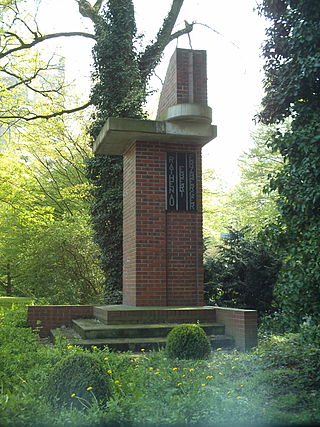
The Ebert-Erzberger-Rathenau Memorial is a memorial designed by Justus Haarmann in the city of Osnabrück. It was erected in honour of the leading politicians of the Weimar Republic Friedrich Ebert, Matthias Erzberger and Walther Rathenau from the Osnabrück local group of the Reichsbanner Schwarz-Rot-Gold. The memorial, which is located between today's Erich-Maria-Remarque-Ring and Herrenteichswall, is a newly built copy of the original memorial, which was destroyed by the National Socialists in 1933.
12. Bischöfliche Kanzlei
The Episcopal Chancellery is a listed building in Osnabrück (Lower Saxony). The building, which was built between 1782 and 1785, ushered in the architectural style of classicism in Osnabrück. It was the seat of the chancellery – the government – in the Bishopric of Osnabrück. After the end of the Bishopric in 1802, it served as a state and judicial chancellery until the Diocese of Osnabrück bought back the building in 1896. The headquarters of the Roman Catholic Diocese of Osnabrück has its headquarters there.
13. St. Marien
St. Marien is a Lutheran parish and market church in Osnabrück, Germany. It is one of the most artistically and historically significant buildings in the North German city. A previous Romanesque church was mentioned in records as early as 1177. However, the history of the church's construction began some time before it was first mentioned in writing. Archaeological traces suggest the existence of a predecessor building in the 10th century. Construction of the Gothic hall church which exists today started in the 13th century and was completed between 1430 and 1440.
14. Theater am Domhof
Theater Osnabrück is a German theatre in Osnabrück, Germany. It operates under the auspices of the Städtische Bühnen Osnabrück gGmbH. The primary performance venues are the Theater am Domhof and the emma-theater.
15. St. Katharinen
St. Catherine's Church, also known as the St. Katharinenkirche in German, is a late Gothic hall Evangelical church in the old town of Osnabrück, Germany. Its tower, which can be seen from afar and has shaped the cityscape for centuries, is 103 metres (338 ft) high.
16. Akzisehaus

The Akzisehaus is a building in the Lower Saxony city of Osnabrück in the immediate vicinity of the Heger Gate and the museum complex consisting of the Felix Nussbaum House and the Museum of Cultural History.
17. Nettebad
The Nettebad is a public swimming pool in the Sonnenhügel district of Osnabrück. It is a combination of sports and leisure pool as well as an indoor and outdoor pool and has a sauna and spa area. The pool has over 700,000 visitors a year and is operated by Stadtwerke Osnabrück.
18. Waterloo-Tor
Waterloo-Tor is a war memorial in Osnabrück, Germany, commemorating the Battle of Waterloo. Along with its surrounding area the Waterloo-Tor is usually referred to as “Heger Tor” by residents of Osnabrück; the name “Waterloo-Tor” is barely used by locals.
19. Gräberfeld auf dem Bornhügel

The burial ground on the Bornhügel on the outskirts of Osnabrück-Gretesch in Lower Saxony is one of the largest in the Osnabrück region with over 300 cremations and has been known since the end of the 19th century.
20. Stüvehaus
The Stüvehaus was built from 1862 to 1864 as a municipal hospital in Osnabrück, when the previous building on the Große Gildewart became too small. After today's Stadthaus 1 was built, the hospital moved into this building. The Stüvehaus was subsequently used in various ways and today houses the Osnabrück adult education centre and a Brazilian restaurant.
21. Hexengang
The Hexengang or Klapperhagen is a narrow alley at the cathedral in Osnabrück. It leads from the Große Domsfreiheit between the Small Church and the cathedral. On the last stretch towards the Hase, there is a building above the alley, so that it ends from a small portal on the Conrad-Bäumer-Weg road. Due to the high walls that surround the alley, the corridor seems very dark and oppressive.
22. Fountain Of Wishes
The Fountain of Wishes is a bronze sculpture of a urinating policeman in Osnabrück. He is often also called the Peeing Policeman or Osnabrück's Manneken Pis. The bronze figure stands in the city center in the river Hase at the Çanakkale Bridge, named after Osnabrück's twin city. Opposite on Schillerstraße is the Haarmannsbrunnen.
23. Ledenhof
The Ledenhof is a historic building in the city of Osnabrück, Lower Saxony, Germany. During the medieval period it was the city residence of the noble von Leden family. Having initially been an extensive courtly building complex, today only the seven-storey Steinwerk building and the great hall with stair tower remain. Since 2002 the Ledenhof has been the main office of the Deutsche Stiftung Friedensforschung.
24. Time is turning
Time is turning is a 65-ton and five-meter-high work of art by Hans-Jürgen Breuste. He created it in 1991 from large engine crankshafts and solid steel girders before it was erected in 1992 at the Gerberhof in Osnabrück. The title of the artwork is intended to refer to the transformation of the city after the closure of the steel mill in 1989, during which many jobs in the city were lost. Although the city has been transformed into a modern service centre, it is still strongly industrialised.
25. Östringer Steine 1
The Östringer Stones I–III are mostly badly damaged Neolithic megalithic tombs of the passage grave type with the Sprockhoff nos. 911–913. They were built between 3500 and 2800 BC as megalithic sites of the Funnel Beaker Culture (TBK). Neolithic monuments are an expression of the culture and ideology of Neolithic societies. Their origin and function are considered to be hallmarks of social development. In 1987, the facilities were incorporated into the nature reserve "Hochufer und Altarm der Nette am Oestringer Esch".
Share
How likely are you to recommend us?
Disclaimer Please be aware of your surroundings and do not enter private property. We are not liable for any damages that occur during the tours.
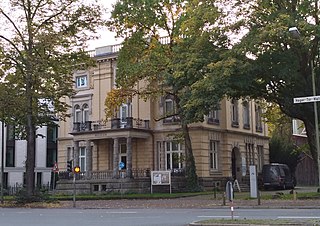
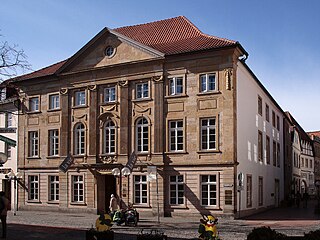
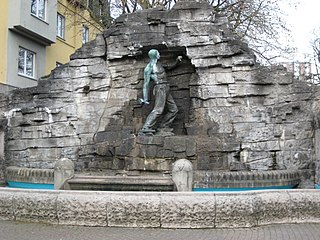
.jpg)

